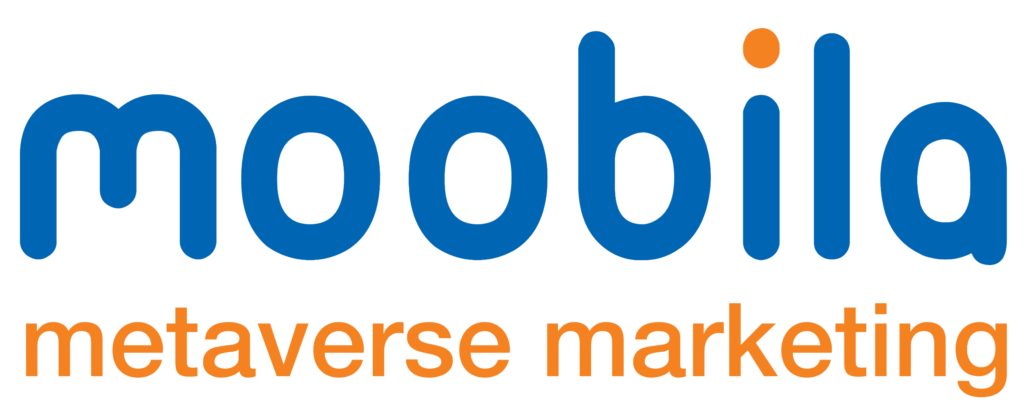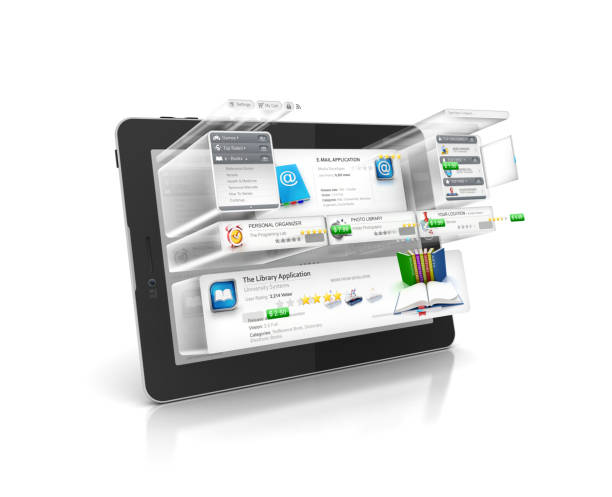The journey from a glimmer of an app idea to a thriving application in the App Store or Google Play Store is a challenging, yet potentially highly rewarding one. Many aspiring entrepreneurs and developers have dreamed of creating the next viral app, but only a fraction actually build a successful mobile app. Success requires much more than just a brilliant concept; it demands meticulous planning, strategic execution, a keen understanding of the market, and an unwavering commitment to delivering a user experience that delights and retains.
At Moobila, we’ve guided countless clients through this process, and we’re excited to share the essential elements that separate successful apps from those that fade into obscurity.
Validating Your Idea: The Foundation for Build a Successful Mobile App
Before diving into the technical aspects of development, it’s crucial to validate your app idea. Ask yourself: Does it solve a real problem? Is there a market for it? Are there similar apps already available, and if so, what makes yours unique?
- Market Research: Conduct thorough market research to understand your target audience, identify competitors, and assess the overall demand for your app. Tools like Google Trends, Statista, and Sensor Tower can provide valuable insights.
- Competitive Analysis: Analyze your competitors’ apps to identify their strengths and weaknesses. Look at their features, pricing, marketing strategies, and user reviews. This will help you differentiate your app and identify opportunities for improvement.
- Minimum Viable Product (MVP): Create a Minimum Viable Product (MVP) with the core functionality of your app. This allows you to test your idea with real users, gather feedback, and iterate quickly.
- User Feedback: Actively solicit feedback from your target audience throughout the development process. Use surveys, interviews, and beta testing to gather valuable insights and identify areas for improvement.
Planning and Design: Creating a Blueprint for Success
Once you’ve validated your idea, it’s time to create a detailed plan for your app. This includes defining your target audience, outlining the app’s features, creating a wireframe, and designing the user interface (UI).
- Target Audience Definition: Define your target audience as specifically as possible. Consider their demographics, interests, needs, and pain points. This will help you tailor your app to their specific requirements.
- Feature Prioritization: Prioritize the features of your app based on their value to the user and their feasibility to implement. Focus on the core functionality first and add additional features later.
- Wireframing: Create wireframes to map out the user flow and layout of your app. This will help you visualize the user experience and identify any potential usability issues.
- UI/UX Design: Design a user interface that is both visually appealing and easy to use. Pay attention to typography, color palettes, and the overall aesthetic of your app. A well-designed UI can significantly improve user engagement and retention. Adhere to Apple’s Human Interface Guidelines and Google’s Material Design to enhance usability and ensure consistency with platform standards.
Development: Choosing the Right Technology Stack
The development phase is where your app idea comes to life. You’ll need to choose a technology stack that is appropriate for your app’s requirements, assemble a development team, and follow a structured development process.
- Native vs. Cross-Platform: Decide whether to develop your app natively (iOS and Android separately) or use a cross-platform framework like React Native or Flutter. Native apps generally offer better performance, while cross-platform apps can save time and resources.
- Backend Development: Plan your backend infrastructure, including database, server-side logic, and APIs. Consider using cloud-based services like AWS or Google Cloud to handle scalability and reliability.
- Agile Development: Use an agile development methodology to break down the development process into smaller, manageable sprints. This allows you to iterate quickly, respond to feedback, and adapt to changing requirements.
- React Native Documentation: If you mention cross-platform development, provide a link to React Native’s documentation.
Testing: Ensuring Quality and Reliability
Thorough testing is essential to ensure that your app is bug-free, reliable, and performs well. Conduct testing throughout the development process, including unit testing, integration testing, and user acceptance testing (UAT).
- Unit Testing: Test individual components of your code to ensure that they function correctly.
- Integration Testing: Test the interaction between different components of your app to ensure that they work together seamlessly.
- User Acceptance Testing (UAT): Have real users test your app to identify any usability issues or bugs that may have been missed during development.
- Performance Testing: Conduct load testing and stress testing to ensure that your app can handle a large number of users and transactions without performance degradation.
Launching and Marketing: Getting Your App in Front of Users
Launching your app is just the beginning. You’ll need to develop a comprehensive marketing strategy to get your app in front of your target audience and drive downloads.
- App Store Optimization (ASO): Optimize your app store listing to improve its visibility in search results. This includes choosing relevant keywords, writing a compelling description, and creating high-quality screenshots and videos.
- Social Media Marketing: Use social media to promote your app, engage with your target audience, and drive downloads.
- Paid Advertising: Consider using paid advertising platforms like Google Ads and Facebook Ads to reach a wider audience.
- Public Relations: Reach out to journalists, bloggers, and influencers to generate media coverage for your app.
- Content Marketing: Create valuable content, such as blog posts, articles, and videos, to educate your target audience about your app and its benefits.
- Mobile Marketing Association (MMA): Link to MMA for mobile marketing best practices and industry standards. (https://www.mma.com/)
Monetization: Generating Revenue
Unless your app is a non-profit project, you’ll need to develop a monetization strategy to generate revenue. There are several monetization models to choose from, including:
- In-App Purchases: Sell virtual goods, subscriptions, or premium features within your app.
- Advertising: Display ads within your app and generate revenue based on impressions or clicks.
- Freemium: Offer a basic version of your app for free and charge for premium features.
- Subscription: Charge users a recurring fee for access to your app’s features or content.
- In-App Purchases Guidelines (Apple): Link to Apple’s guidelines on implementing in-app purchases. (https://developer.apple.com/in-app-purchase/)
- Google Play Billing Library: Link to the Google Play Billing Library for in-app purchases on Android. (https://developer.android.com/google/play/billing)
Continuous Improvement: Iterating and Adapting
The journey doesn’t end once your app is launched. You’ll need to continuously monitor user feedback, track app performance, and iterate on your app to keep users engaged and address any issues.
- Analytics: Use analytics tools to track user behavior, identify areas for improvement, and measure the success of your marketing campaigns.
- Google Analytics for Firebase: Guide on tracking user behavior and app performance. (https://firebase.google.com/docs/analytics)
- User Feedback: Actively solicit feedback from your users through surveys, reviews, and social media.
- A/B Testing: Use A/B testing to compare different versions of your app and identify which ones perform best.
- Regular Updates: Release regular updates to your app to fix bugs, add new features, and improve performance.
The Moobila Advantage: Partnering for Success
Building a successful mobile app is a complex and challenging undertaking, but it’s not impossible. By following these essential steps and partnering with an experienced development team like Moobila, you can increase your chances of success. We have the expertise, resources, and passion to help you turn your app idea into a thriving business. We use best practices and we take pride in our work to build a successful mobile app..This
| Phase | Key Activities | Success Factors |
| Idea Validation | Market research, competitive analysis, MVP development, user feedback | Identifying a real problem, understanding the market, differentiating your app, gathering user insights |
| Planning & Design | Target audience definition, feature prioritization, wireframing, UI/UX design | User-centric approach, intuitive design, clear user flows, aesthetically pleasing interface |
| Development | Technology stack selection, backend development, agile methodology, coding best practices | Scalable architecture, clean code, efficient algorithms, robust security |
| Testing | Unit testing, integration testing, user acceptance testing, performance testing | Thorough testing, bug fixing, performance optimization, reliability |
| Launch & Marketing | ASO, social media marketing, paid advertising, public relations, content marketing | Targeted marketing, compelling messaging, high-quality visuals, effective app store optimization |
| Monetization | In-app purchases, advertising, freemium model, subscription model | Sustainable revenue stream, user-friendly monetization methods, valuable content/features, clear pricing |
| Continuous Improvement | Analytics tracking, user feedback analysis, A/B testing, regular updates | Data-driven decisions, continuous improvement, responsiveness to user needs, long-term sustainability |
Wrapping it Up
In the ever-evolving landscape of mobile apps, personalization powered by AI is no longer a luxury, but a necessity. By leveraging AI, Moobila can transform generic apps into tailored experiences that delight users, anticipate their needs, and foster lasting engagement. From personalized content recommendations to adaptive user interfaces and beyond, the possibilities are limitless. Embracing AI-driven personalization will not only set your app apart but also pave the way for a future where technology truly understands and caters to the individual.
At Moobila, we are committed to harnessing the power of AI to deliver exceptional, personalized experiences that redefine the way users connect with your app.



